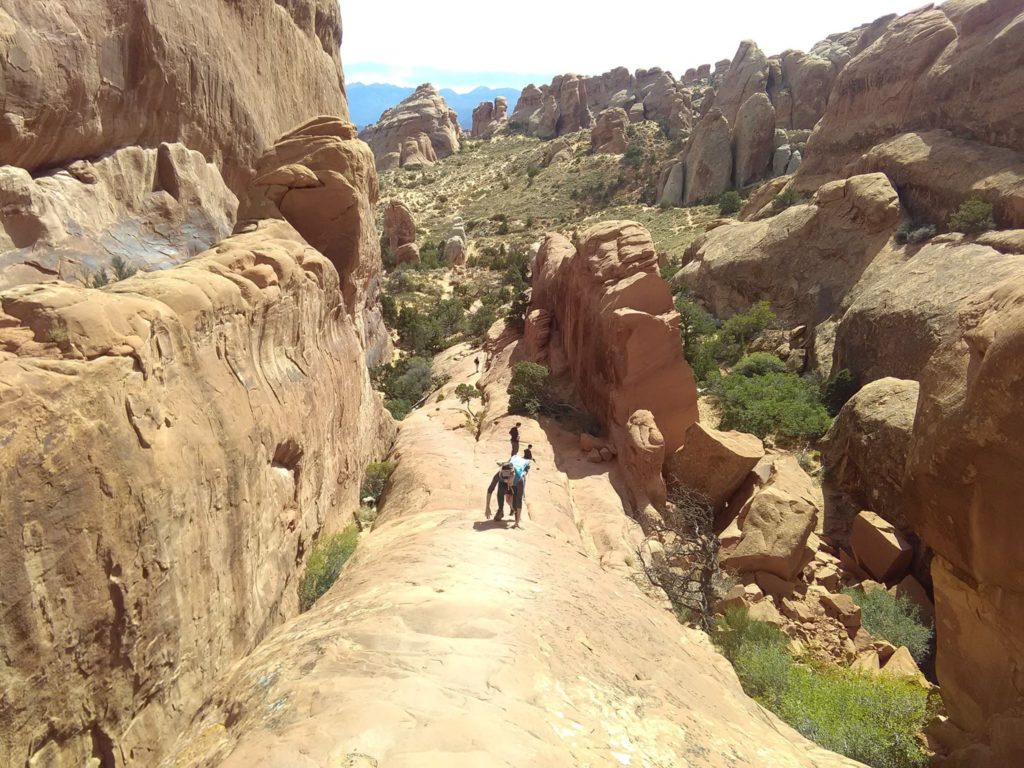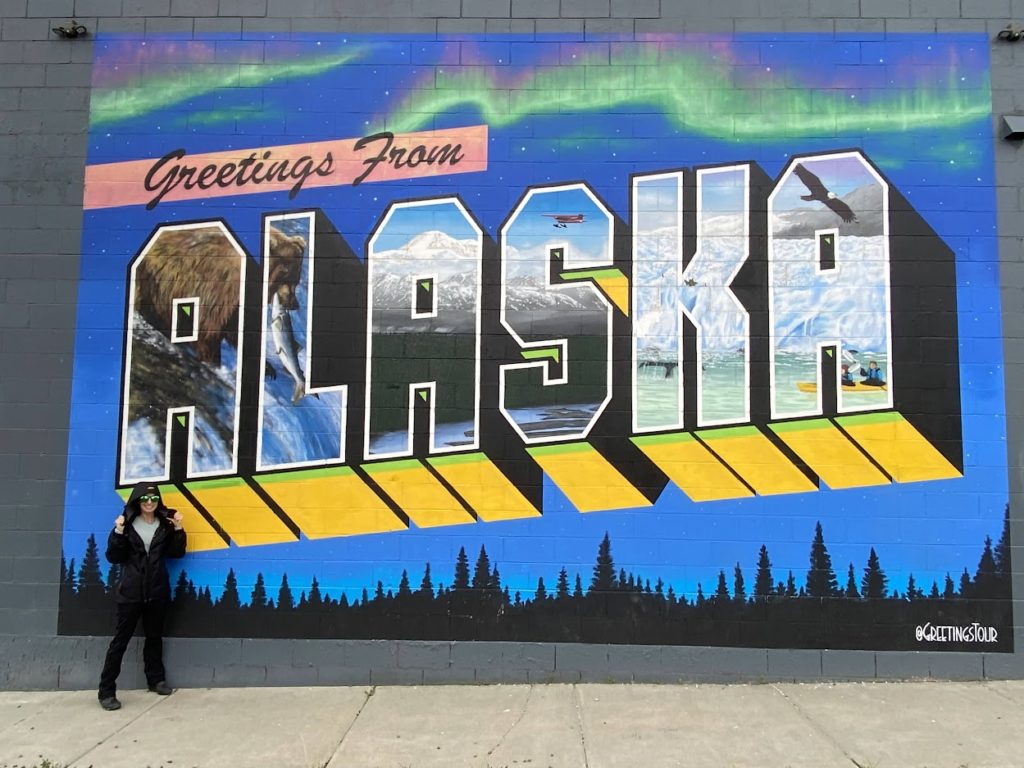One road trip. Five parks. All the magic.
It’s no secret. The jaw-dropping red rock landscapes of Utah are unparalled. Here’s how to visit all five National Parks in one road trip, complete with hiking trail recommendations, of course.

Did You Know...?

World Record
Arches NP is home to the most natural arches in the world.

Don't look down...
Angel's Landing in Zion is ranked one of the most dangerous hikes.

Do you like apples?
Capitol Reef NP is full of orchards, and you can pick your own fruit.
Annual Visitation Numbers
(2021 Statistics)
912K
Canyonlands
1.4M
Capitol Reef
1.8M
Arches
2.1M
Bryce
5.04M
Zion
Where To Start
Fly in to Salt Lake City. Visit the parks in order east to west (Arches, Capitol Reef, Canyonlands, Bryce, Zion). Fly out of Vegas.
Fly in to Denver. Visit the parks east to west and fly out of Vegas. *It will be a longer drive, but the tradeoff is that you get to take I-70 Westbound. If you have time, you can stop in Grand Junction to check out the Colorado National Monument. Next to Arches National Park, this area has the highest concentration of natural arches.
Fly in to SLC or Denver. Visit the parks east to west. If you have time, you can then head south to the Grand Canyon. From there you can fly out of Phoenix.
Fly into Vegas. Visit the parks west to east (Zion, Bryce, Canyonlands, Cap Reef, Arches). Fly out of SLC.
If it’s possibly to plan to not be here on a weekend, I’d make that a priority. It’s the most crowded of the five. We actually skipped Delicate Arch to avoid the masses. We had a ton of fun running around here, you can climb on stuff, which is always a bonus.
So pretty. Lots of hikes with good views that aren’t too challenging. This park is unique because it has orchards and depending what is in season you can go pick your own fruit 🙂
This is actually a huge park. We were primarily on the southside (Needles visitor center). The park has a lot of petroglyphs, if you are into that. The views are very Grand Canyon-esque. Depending on the driving route you take, UT211 into Canyonlands is super scenic.
We stayed at the lodge in the park, which puts you basically staying a short walk from the rim of the best views. Totally worth it. You technically only need to stop here for an hour or so. You can get the scope of most of the park from the rim. The hikes are good but if you don’t have time don’t feel bad missing them.
If you are crunched for time, this is the only park I’d consider spending more than one day in. You’ll want to hike the narrows, which is an all day extravaganza, but there are other hikes with amazing views you don’t want to miss. You can stay in Springdale. There is a shuttle that will take you into the park, or you can just drive in. If you go early enough you should be able to find parking. *There is a shuttle that takes you from the visitor center to the trailheads. When we visited you had to reserve a spot and they were limited. I don’t believe you need a reservation as of 2024, but make sure to check the park website to confirm. Otherwise you can’t get to the many of the trails.
THE MAP
Wilderness is not a luxury but a necessity of the human spirit, and as vital to our lives as water and good bread.
Edward Abbey
Arches National Park
Welcome to the otherworldly beauty of Arches. There are over 2,000 natural stone arches throughout this unique red rock landscape. Some of the hikes are not for the faint of heart, or those fearing heat exhaustion.
Plan carefully. Summer temps can exceed 100°(F). The best times to visit are spring and fall, but you’ll definitely be battling the crowds. The elevation here ranges from 4,085 – 5,653 feet.
As of 2024, the park requires you to make a reservation during the busiest times. You can find the details here.




Where to stay:
If you’re in the mood to splurge, we recommend the Hoodoo Moab, Curio Collection by Hilton. My sister joined us for this part of the trip and we wanted to treat her to something nicer, so we used our Hilton points. You can also camp, but you’ll need a reservation.
Trail recommendations:
–Devil’s Garden Loop: 7.9 miles, 1,085ft. elevation gain. (You can branch off to Partition Arch, Navajo Arch, and Dark Angel Trail.)
-As sad as it sounds, we skipped trying to see Delicate Arch. We wanted more time on the trails and less time battling crowds.
Need to know:
Plan carefully. Temps can exceed 100° and the park’s elevation is at over 4,000 ft. If you plan to hike, get out there early. Bring more water than you think you’ll need, and plenty of snacks and/or electrolytes. Hats, sunglasses, and sunscreen are musts.
Capitol Reef National Park
“…the light seems to flow or shine out of the rock rather than to be reflected from it.” -Clarence Dutton.
Welcome to the lesser known gem that is Capitol Reef National Park. Averaging about a half million less visitors than Arches, you can find a bit more space to breathe here. You’ll find a mix of natural wonders from canyons to orchards, and even find some petroglyphs.
Right now this park is not subject to timed-entry permits. You can find up to date information such as road closures and weather alerts on the park website. It is the second biggest of the parks at 377 sq. mi., but is second to last in terms of visitation. The elevation ranges from 3,877 – 8,960 feet.




Where to stay:
We stayed at the Capitol Reef Resort. This park has camping options as well.
Trail recommendations:
–Hickman Bridge Trail: 1.7 miles, 416ft elevation gain.
-Rim Overlook Trail: 4.3 miles, 1,066ft elevation gain.
-Chimney Rock Loop Trail: 3.3 miles, 793ft elev gain (Can keep going or do the Mummy Cliff loop)
-Cohab Canyon to Fruta Campground: 3.0 miles, 793ft elev gain.
Need to know:
Capitol Reef is a dark sky park. And everything you need to know about fruit picking in the orchards is in this NP handout.
Canyonlands National Park
Welcome to rugged red rock canyons and untouched wilderness. You can catch a sunrise at Mesa Arch or navigate the trails of The Needles. You could spend a week here and not do it all. You can visit the park website for more information and even trip itineraries.
At a whopping 527 square miles, Canyonlands is the largest of the five parks (Capitol Reef is next at 378 sq mi). Interestingly enough, it also gets the least amount of annual visitors. The elevation here ranges from 3,900 – 7,180 feet.




Where to stay:
We stayed at the Desert Rose Inn. This location is actually far from the park, but we were heading south after Canyonlands so it made sense for us on our route. If your route takes you in this direction, we recommend it. You can also look at these lodging options. The park has camping options as well.
Trail recommendations:
–Big Spg Canyon Trailhead
-Slickrock Trail: 2.4 miles, 137ft elev gain.
Need to know:
This park is huge. It’s over twice the size of Zion. We only got to explore the area round the Needles Visitor Center in the south end of the park. To put it in perspective, you’d have to drive 2 hours to get to the other visitor center, Island in the Skye. If you are interested in rafting, you can do that here too.
Bryce National Park
Bryce Canyon may be the smallest of the five at only 56.2 square miles, but it packs a pretty big punch with it’s “ooh-ahh” views. This desert wonderland is known for it’s hoodoos – those towering rock spires – and you can view them from the top or wind your way through them on a hiking trail.
This park gets most of it’s visitors in the summer, but don’t rule out fall and winter months. You could catch a glimpse of this landscape covered in snow, making it look even more magical. Make sure you keep up to date with road closures and other notifications on the park website. The elevation here ranges from 6,620 – 9115 feet.




Where to stay:
We stayed at the Bryce Canyon Lodge for 1 night. It’s perfect for what it is. Be prepared – they do not have TV’s, Wi-Fi, or air conditioning in the rooms. You can also camp.
Trail recommendations:
We arrived in the late afternoon and walked from Sunset point to upper inspiration point (We were able to walk here from our room).
The next day we started at Sunset Point again, and did somewhat of a “figure 8” through the trails.
-Down Navajo Loop (switchbacks).
-Up Peek-A-Boo Trail Loop
-Cross over to Queen’s Garden trail which loops you back to Sunrise Point.
Need to know:
Bryce Canyon is by far the smallest of the five. If you are crunched for time, you really only need a few hours here. Otherwise it’s worth staying at least one night to hike through the HooDoos. They are other-worldly. Also, anything you wear will probably get dusty!
Zion National Park
Welcome to Zion – an experience like no other. From one of the most dangerous hikes in the country to serene emerald pools, this park has something for everyone. And by everyone, we mean double the visitors of any of the other Utah parks. Zion spans 229 square miles and is home to the famous Angels Landing hike as well as The Narrows. But you could spend days here navigating the trails less traveled.
When we visited, we needed a reservation for the shuttle. Beginning in 2024, you do not need a ticket or reservation. However, you will need to apply for a permit if you want to brave Angel’s Landing. You can find that and all other up-to-date information on the park’s website. The elevation here ranges from 3,665 – 8,726 feet.




Where to stay:
Stay in Springdale. You can take the free shuttle in to the park. We stayed at the Hampton Inn & Suites Springdale.
Trail recommendations:
-The Narrows: We went as far as Orderville gulch. I would have liked to have gone further if we had better shoes and more time. We did the W Rim Trail on the same day
-Big Bend Viewpoint
-W Rim Trail: Connects to Angel’s Landing (If you’re in to that).
-Watchman Trail
-Emerald Pools Trail
Need to know:
You’ll need ‘water shoes’ to hike the narrows. Don’t be idiots like us and bring “Florida water shoes.” We showed up thinking we were smart bringing our own gear and not having to rent it. We quickly realized everyone around us was wearing something like this – and the joke was on us. Those rocks are slippery, and it make the entire process way harder than it needed to be. Rent the good canyoneering boots.
Park Size
(In square miles)
56
Bryce
119
Arches
232
Zion
377
Capitol Reef
527
Canyonlands

What To Pack
Chances are, this isn’t the first trip you’ve ever been on. So we’ll skip the basics. Here are the must-have’s or extras to consider when packing for this particular adventure.
Sturdy Water Shoes: Don’t make the same mistake we did when hiking The Narrows. Basic water shoes aren’t good enough. You need something with grip, and that can protect you from stubbing your toes on the rocks. Something like this would be ideal, since you’ll also be treading through sand.
Ankle Gaiters: As you can see from the this picture, desert hiking can get pretty dusty. And I didn’t have gaiters on this trip. Shoes full of sand = no fun.
GRAYL: One of our best purchases. We take it with us on every road trip now. You can filter water from almost any freshwater source within minutes.
Hydration Backpack: The desert heat is no joke. A good hiking rule of thumb is to always carry more water than you think you need. This is the most convenient way.
Sun Protection: If these things aren’t already on your list, add them now. Get a wide brimmed hat, consider a top that offers neck protection, and always wear sunglasses! (Trust me on that one – I got cataracts in my 40’s).



